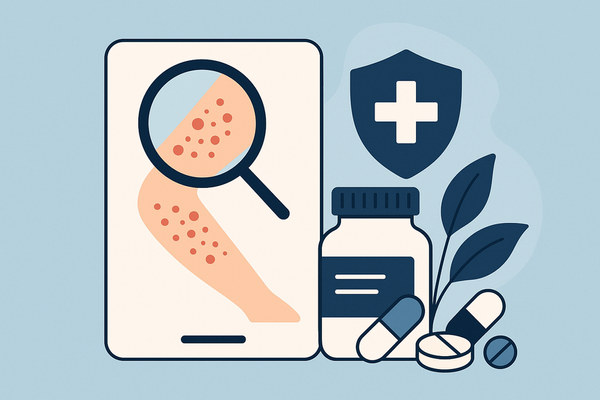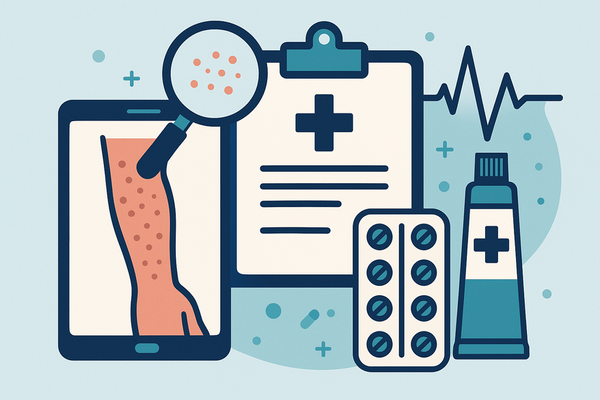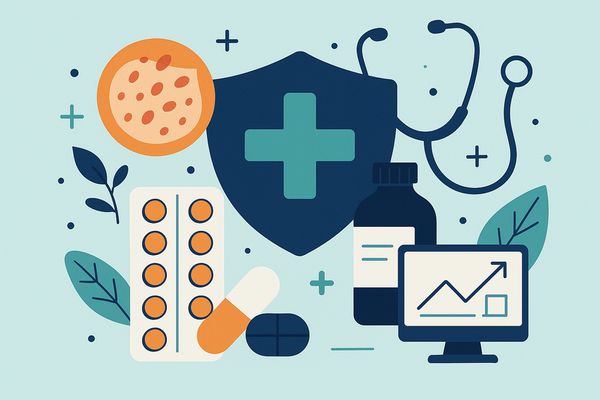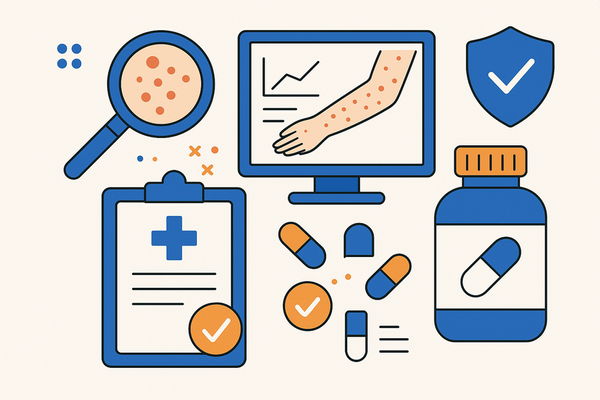Understanding Cyclical Rash Triggers: How Hormonal Fluctuations Affect Your Skin
Learn how cyclical rash triggers from hormonal fluctuations affect your skin. Discover patterns, symptoms, and strategies to manage these predictable flare-ups.
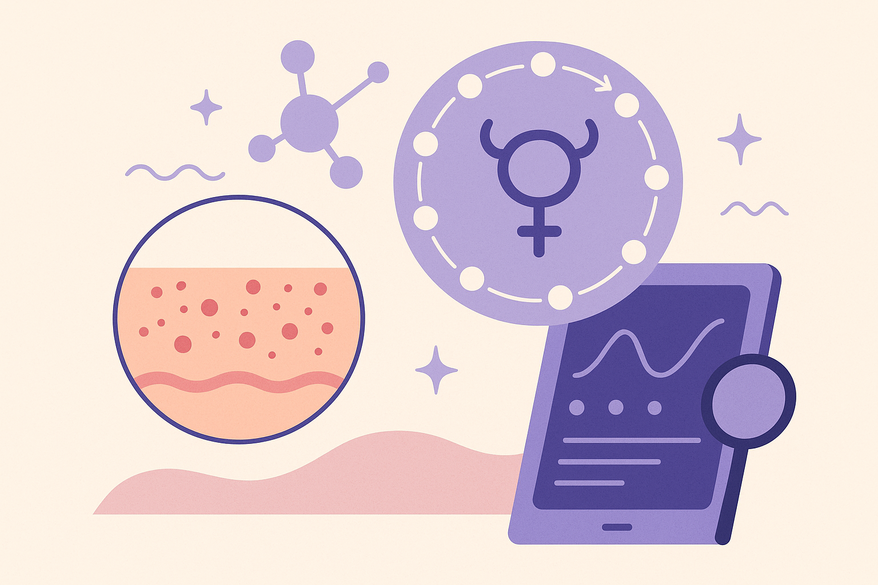
Estimated reading time: 7 minutes
Key Takeaways
- Hormonal dips and peaks can weaken the skin barrier and trigger immune responses, leading to recurring rashes.
- Tracking your cycle with a simple diary or photo tracking helps identify patterns and predict flares.
- Combining self-care, barrier protection, and targeted medical treatments offers the best defense against cyclical rashes.
Table of Contents
- Background on Hormones and Skin Health
- Defining Cyclical Rash Triggers
- Identifying Common Cyclical Rash Triggers
- Recognizing Symptoms and Patterns
- Strategies for Managing and Preventing Cyclical Rash Triggers
- Conclusion
Introduction
Cyclical rash triggers are hormone-linked factors that cause recurring skin rashes in a predictable pattern. These triggers matter because they can lower your quality of life, lead to guesswork in diagnosis, and make treatment harder. If your skin flares up at the same time each month, you may be dealing with a hormonal pattern rather than a random rash. In this post, you will learn:
- What hormonal events provoke these rashes
- How to spot the pattern
- Strategies to manage and prevent flare-ups
Background on Hormones and Skin Health
Hormones are chemical messengers that guide many body functions, including skin health. They affect:
- Skin barrier strength – how well your skin keeps out germs and irritants
- Moisture retention – how hydrated and plump your skin stays
- Immune surveillance – how your body defends against infections
- Inflammation – how your skin reacts to triggers
Estrogen Effects
- Boosts skin hydration by increasing natural oils
- Promotes faster wound healing and skin repair
Progesterone Effects
- Rises in the luteal (pre-period) phase and can make skin more sensitive
- May heighten immune responses, leading to redness or itch
Hormone Drops
- Sudden falls in estrogen or progesterone weaken the skin barrier
- Leaves skin open to irritants, triggering flares of eczema or dermatitis
Defining Cyclical Rash Triggers
Formal Definition:
“Cyclical rash triggers are internal or external factors—predominantly hormonal fluctuations—that provoke recurrent cutaneous eruptions following a predictable, time-based pattern, particularly around menstrual or other endocrine cycles.”
How They Differ from Non-Cyclical Rashes:
- Cyclical rashes repeat in sync with your hormone cycle
- Non-cyclical rashes come from constant exposures (like a soap allergy or infection) and have no time pattern
Common Hormonal-Cycle–Linked Rashes:
- Autoimmune Progesterone Dermatitis (APD): 3–4 days before your period, fading after you bleed
- Eczema Flares: Worse just before periods or during menopause
- Annular Erythema and Hives: Ring-shaped red patches or raised wheals
- Papulovesicles and Angioedema: Small fluid-filled bumps or deeper swelling linked to hormone peaks
Identifying Common Cyclical Rash Triggers
Premenstrual Syndrome (PMS)
Progesterone spikes in the luteal phase can activate immune cells in the skin, leading to red, itchy welts or eczema-like blisters.
Pregnancy
Estrogen and progesterone levels soar and may trigger new rashes or, conversely, improve existing issues.
Menopause
Decline in estrogen and progesterone reduces skin moisture and barrier strength, bringing on dryness, itch, and new rash patterns.
External Modulators
- Stress: ups cortisol and can worsen hormone-linked flares
- Environmental Allergens: pollen or dust that mix with hormone peaks to irritate skin
- Certain Medications: some drugs can amplify your natural hormone effects
Recognizing Symptoms and Patterns
Hallmark Symptoms:
- Red, itchy patches that flare just before menstruation (3–5 days prior)
- Hives (urticaria), often in clusters
- Papulovesicles: small blisters that ooze or itch
- Annular erythema: red rings on the skin
- Angioedema: deeper swelling, often around lips or eyes
- Oral erosions: painful spots inside the mouth
Tracking Your Cycle
Keep a daily diary of rash events next to your period dates. Note start date, duration, and severity of each flare. For a step-by-step guide on photo tracking, check out the tutorial.
To simplify flare tracking, consider using an AI-powered tool like Rash Detector. With quick photo uploads, you get instant analysis to spot patterns and refine your plan.
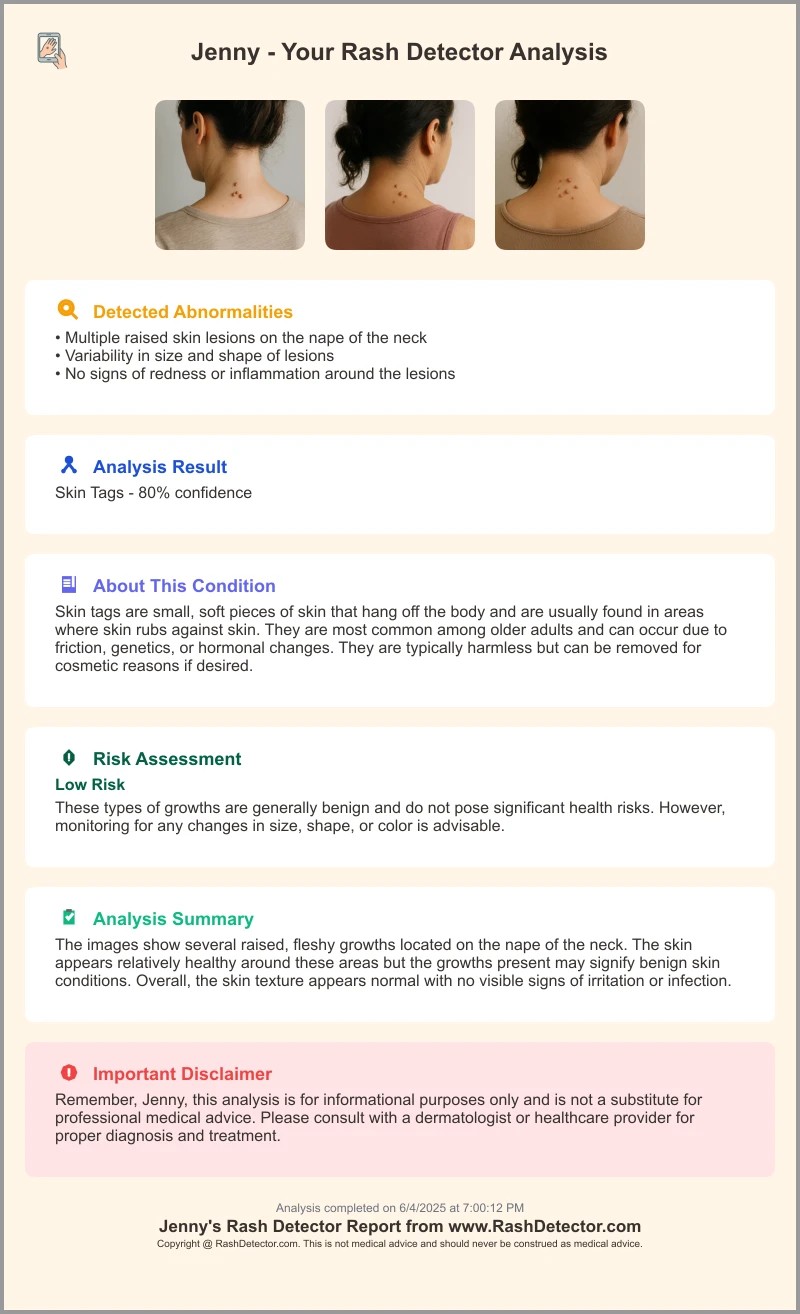
Red Flags for a Doctor Visit
- Rash spreads quickly or covers large areas
- Over-the-counter creams or antihistamines do not help
- You have fever, fatigue, or joint pain along with the rash
Strategies for Managing and Preventing Cyclical Rash Triggers
Lifestyle & Self-Care
- Stress Management: Practice deep breathing, yoga, or meditation to lower cortisol
- Skin Barrier Protection: Use fragrance-free, hypoallergenic moisturizers daily (see fragrance-free moisturizer suggestions)
- Allergen Avoidance: Keep laundry free of harsh detergents; choose natural fabrics like cotton
- Symptom Tracking: Update your diary to spot upcoming flare windows
Medical & OTC Treatments
- Topical corticosteroids for localized inflammation
- Antihistamines for itch relief
- Hormonal therapies like combined oral contraceptives to smooth progesterone peaks
- Sensitivity testing in specialized clinics to confirm APD
Monitoring & Lab Tests
Periodic blood tests to track estrogen and progesterone levels, correlated with your symptom diary to fine-tune treatment. For broader hormonal imbalance insights, see our detailed guide.
Conclusion
Cyclical rash triggers play a central role in many hormone-linked skin conditions. By learning to spot the timing of your flares and using a mix of lifestyle changes, barrier protection, and medical care, you can take control of these predictable outbreaks. Keep tracking your symptoms, talk to a dermatologist or endocrinologist, and build a plan that fits your cycle and your life.
FAQ
What causes cyclical rash triggers?
Cyclical rash triggers are primarily driven by hormonal fluctuations—such as estrogen and progesterone peaks or drops—that affect skin barrier function and immune responses, leading to predictable monthly flares.
How can I tell if my rash is cyclical?
Track your symptoms alongside your menstrual cycle. If flare-ups consistently occur at the same points—like just before your period—or during menopause, you likely have a cyclical pattern.
Are there effective self-care strategies?
Yes. Stress reduction, fragrance-free moisturizers, allergen avoidance, and diligent symptom tracking can all help reduce flare frequency and severity.
When should I see a doctor?
If your rash spreads rapidly, covers large areas, doesn’t respond to OTC treatments, or comes with systemic symptoms (fever, joint pain), consult a dermatologist or healthcare provider.
Can hormonal treatments help?
Hormonal therapies—such as combined oral contraceptives—may smooth out progesterone peaks and reduce flares. Always discuss risks and benefits with your doctor.


